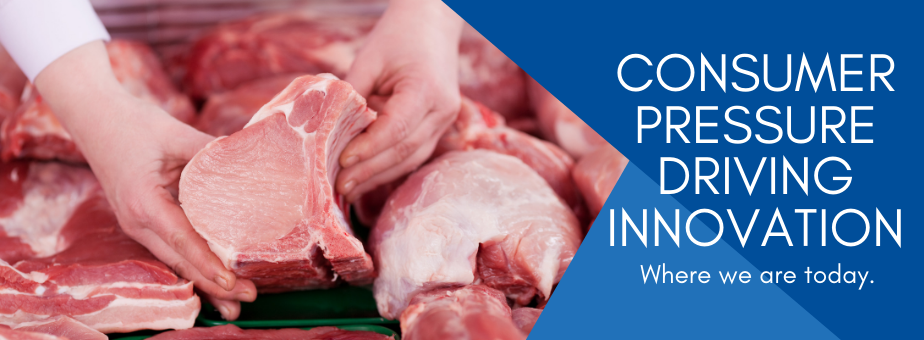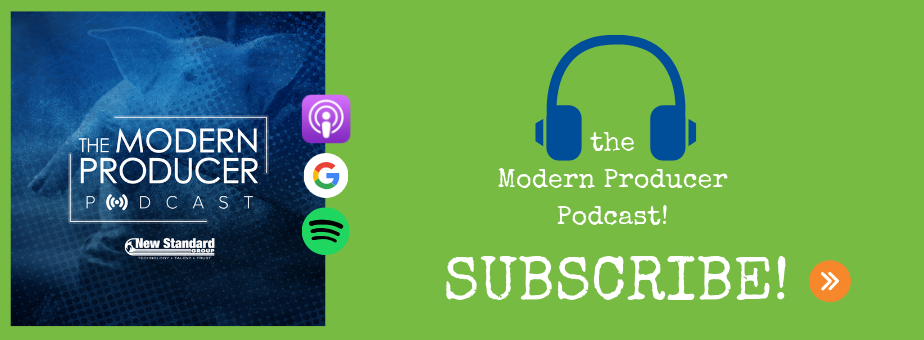
As we dive deeper and deeper into the information age, each of us has more access to any information we desire—from reviews on the best new car to purchase, to the best video streaming service, to finding out exactly where our meat comes from.
Well, that last one may not entirely be here yet, but it is happening.
Trends in consumer demand
"We are seeing a generational shift today," said Jeff Morten, Nedap’s US Sales Manager. "Consumers want to know where their food came from, how it was raised, what antibiotics did it have, and so on. Consumers are looking for honest, accurate information."
And pork producers are starting to feel the pressure.
Wal-Mart and IBM have started working with blockchain technology (more on this coming soon.) to track products for issues like E. coli before they even hit the shelves
Consumers maintain an unspoken trust that the products they purchase are safe, and Wal-Mart is being proactive on this topic. Currently, the company has a September 2019 deadline for its suppliers of leafy green vegetables to comply and upload their data to the blockchain.
Although we haven’t seen these requirements in the pork industry yet, it’s safe to assume it’s coming.
As each generation of customers gets more knowledgeable about their food, questions and the need for transparency will grow. Today, there is a shared assumption that when you go to your local grocery store, the products you buy will be safe and ready for you to enjoy.
If the pork industry assesses this trend now and strategizes about how to comply and address it, we too, can be proactive and stay ahead of the curve.
It's not only the safety of the meat that has consumers concerned but the well-being of the animals and the environments in which they are raised. We have already seen an uproar over "free range” or “cage free" egg and poultry labeling. The problem originated from a lack of consistency regarding the definitions of those terms. Using such loose definitions has backfired on more than one occasion.
Consumers are simply looking for fair and accurate information. Technology, such as blockchain and the internet of things (IoT), is going to make that entirely possible.
Where are we today?
"It is possible today to gather all the information that the consumer wants, from the day the piglet is born to the environment it's raised, to the truck it takes to the packing house," said Morten.
The technology and reporting is all there. We just need a push and the medium to get it to the customer. We’re not at the point of seeing pigs’ names on our packaging, but theoretically, it’s possible.
Just as Wal-Mart is using blockchain, producers and packing houses are also exploring the technology. At some point, this will be the expectation.
In many ways, the United States is behind the curve. Consumer demand in Europe drove the adoption of group housing and electronic sow feeding over 20 years ago. China is also on the fast track to adopting this technology, although they have some significant hurdles to overcome.
The technology that allows you to know everything about a pig from birth to slaughter is still pretty new, and we are seeing some adoption, but it’s slow. Just like when DVD started to take over for VHS, it simply takes time for people to see the benefits and make changes.
How can producers connect with consumers today?
We are starting to see some of the larger companies, packhouses, and producers share more information with the general public. Tyson Foods and Christensen Farms as well as many others have information on their websites regarding animal welfare. Sometimes even numbers and percentages are shared.
We’re also starting to see some restaurant chains offer details on where their food is sourced and how it's raised. Producers can easily begin to share relevant information on their websites or via social media. There are so many ways to connect in 2019, you simply need to pick a medium that works best for you.
More can also be done with the transparency of the product labels we are using. By setting up an agreed upon definition with checks and accountability, our industry could make some big leaps in trust with consumers. Today, the definitions of loose sow housing can vary greatly within the industry, but no matter your opinion, we can all agree that there needs to be a common definition with distinction between group housing styles.
The positive thing is we are moving in the right direction. Some producers are already adopting this new approach to getting things done.
What’s on the horizon—how should producers prepare for coming changes?
"Stop doing it the old way,” said Morten. “Change is coming, and you're going to get left behind.”
Change is hard, and it takes time and money. But Morten believes that is why this generation is making things start to happen a bit quicker. He recommends staying in touch with processors, and even supermarkets, to hear where consumer demand is shifting.
Many producers have been putting off changes because of an assumption that investment cost will be prohibitive.
"The deficit in doing it the old way and the right way has shrunk in recent years," said Morten. "Especially if you are building a new barn."
Hands down, the best thing you can do is reach out to fellow producers. Find the success stories, and find the failures. If you do your research, the options will become clear. You might also see that the gains you make in productivity and efficiency are going to outweigh any additional costs.
To sum it up, consumers are demanding innovation and transparency. If we begin addressing these concerns today, we can get ahead of the trend and be accountable when the time comes.
If you enjoyed this article, make sure you subscribe to our podcast for the latest!





